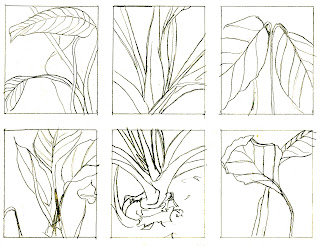I was looking through a book I have had around for years,
Encouraging the Artist in Your Child by Sally Warner. It is interesting to read through her advice and think about how it applies to adults who are artists. Picasso once said something like:
"It took me a few years to learn how to paint like an adult. It has taken me a lifetime to learn how to paint like a child."
That is a very loose paraphrase - but I think the sentiment is true. We spend so much time trying to be "good" at art that we forget the aspects of art that make it worthwhile. Here are some of the quotes by parents shared in Ms. Warner's book and my thoughts on them for adults.
"My three-year-old spends (only) a minute on a drawing."I wish I spent one minute every day drawing. Any time is worthwhile. I get stuck on needing at least two hours to feel like I have gotten something significant done. Some parts of an art piece do take time and it also takes time to get into the right state of mind. I try to have several pieces I am making at different stages of development. That way, if I am in a mindset to do detailed work or to do big "blocking in" work there is something for me to do without fighting myself. When that happens, a short amount of time can be very useful.
"But she scribbles."
Letting the mind wander is very helpful. I quickly tire of being on task. Usually, the paintings I start that I think are going to be really great and a nice continuation or summation of a body of work aren't nearly as good as the ones that seem to come out of nowhere. Scribbling - letting the muse take over - is necessary to progress in a manner that isn't predictable and boring.
"He draws fine, but still paints like a chimp."
How about this: "he paints wonderfully, but his art just doesn't grab me." We all have our weaknesses - we all are chimps at something. There is so much to know about art. Some people are great painters but lousy salesmen. Others are lousy painters but great salesmen. We need to give ourselves a break and do our best to take things one step of improvement at a time. Side note: I actually know an orangutan whose paintings sold for several hundreds of dollars (that's what happens when you work at a zoo).
"He sometimes makes things and smashes them."
I think this would be fitting for my tombstone. Hey, if you don't like it, get rid of it. If you don't like it, stop. Don't waste your time and money on something that isn't going to work -- that isn't capturing the spirit of your creativeness. This is when it becomes duty instead of art. Until you are happy with it, everything is on the chopping block.
With children, art is not about the finished product it is about process; about testing and experimenting how paint and clay and crayons work. As adult artists, we should continually be that exploratory also. But once we have figured out how to use the paint, the clay and the pastels, we should continue to explore what it is we want to express. If there is no exploration in the process, the art becomes predictable. It may be well crafted, but it won't have much to say.






























